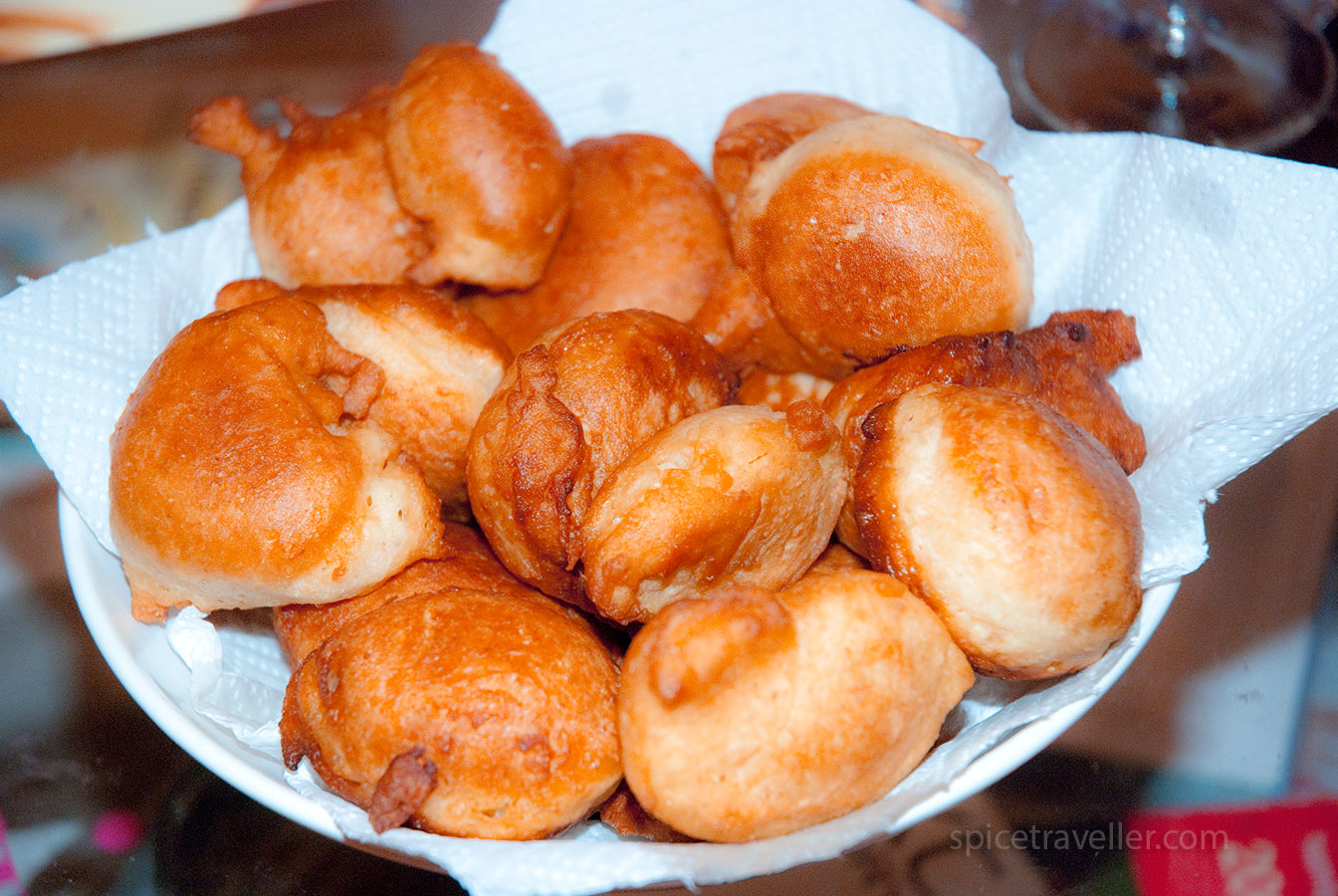Traditional African dessert Mandazi, also known as ‘African donuts’ or ‘Swahili beignets,’ is a beloved snack that holds a special place in the culinary landscape of East Africa. With its origins rooted in countries like Kenya, Tanzania, and Uganda, Mandazi has become a cultural icon and a delightful treat enjoyed by locals and visitors alike. In this article, we will delve into the fascinating world of Mandazi, exploring its history, ingredients, cultural significance, and irresistible flavors that make it a cherished dessert.
Experience the warmth and softness of a freshly made Mandazi. Let its delightful texture entice you. Moreover, the irresistible scent of Mandazi fills the air, emanating an enticing aroma of freshly ground spices, including comforting notes of cardamom and nutmeg. These spices transport you to bustling markets and family kitchens in East Africa.
When you take a bite, the exquisite balance of flavors captivates your senses. The outer layer provides a delicate crispiness, while the inside remains pillowy-soft and light. Additionally, the combination of sweet and slightly spiced dough creates a harmonious taste that both comforts and indulges. The warm spices beautifully complement the sweetness of the dough, leaving a lingering taste that beckons another bite. Whether you enjoy Mandazi plain or dusted with powdered sugar, each mouthful delivers a heavenly experience, delighting and leaving you craving more.
With its enticing texture, aromatic scent, and captivating flavors, Mandazi transcends the realm of dessert. It embodies the spirit of East Africa and reflects the love and passion poured into its creation. So, embark on this flavorful adventure and let Mandazi transport you to a world of delectable delights and cultural heritage.

Ugandan Mandazi Fritters: Fluffy Delights from East Africa
Ingredients
- 3 cups all-purpose flour
- 1 egg
- 1 tsp dry yeast
- 1/2 cup coconut milk
- 1/2 cup sugar
- 1/2 cup warm water
- 1 tbsp vegetable oil
Instructions
- In a small cup or glass mix dry yeast with warm water and 1/2 tsp of sugar - give me one word metadata
- In a large bowl, crack and beat one egg thoroughly. Next, add coconut milk, sugar, and oil to the bowl. Mix the ingredients well until they are fully combined.
- In a separate bowl, combine 2 cups of flour and cinnamon. Create a well in the center and pour in the yeast mixture. Slowly add the egg mixture while stirring with a fork. Once the mixture thickens, begin kneading for approximately 10 minutes. If the dough is too sticky, gradually incorporate an additional cup of flour until it reaches a smooth and elastic consistency.
- Cover with cling film and leave to rise for 45 minutes.
- Roll the dough to a thickness of approximately half an inch. Then, using a round or triangle-shaped cutter, cut the dough into desired shapes. Alternatively, you can take a small amount of dough, roll it into a ball between your hands, and then slightly flatten it.
- Heat the oil in a deep pan until it reaches the desired temperature. Once the oil is hot, carefully place the mandazi into the pan and fry them until they turn a golden brown color.
Notes
- Cultural Significance:
Mandazi holds great cultural significance in East Africa as it symbolizes unity and celebration. People often prepare and serve Mandazi during special occasions such as weddings, festivals, and family gatherings. - Regional Variations:
Mandazi exhibits regional variations in ingredients and preparation methods across East Africa. For instance, coastal areas commonly incorporate coconut milk into the dough to enhance its flavor and texture. - Historical Influence:
Mandazi has been influenced by the historical trade routes in the region, which have brought Arab and Indian culinary influences. This has resulted in a unique blend of flavors, including the use of spices like cardamom and nutmeg. - Social Connection:
The process of making Mandazi is a social activity that fosters connection within East African communities. Families, friends, and neighbors often come together in the kitchen to prepare and enjoy Mandazi while sharing stories and laughter. - Street Food Culture:
Mandazi has gained popularity as a street food in East Africa. Local vendors sell these delectable treats from roadside stalls and food markets, making them a convenient and satisfying snack for on-the-go consumption.

This recipe ended up working out great, I opted to air fry 350° for 10 min after not being happy with oil-fry results.
Total duration should be updated to 1 hour, but overall this was quick and easy recipe and turned out delicious, added a sprinkle of powdered sugar for the kiddos
Hi Jess, thanks so much for your feedback and the rating! I’ve updated the total time. I appreciate your insight. It’s great to hear the air fryer was a success and it turned out well in the end! 🙂